How Much Are Custom Orthotics and Who Needs Them?
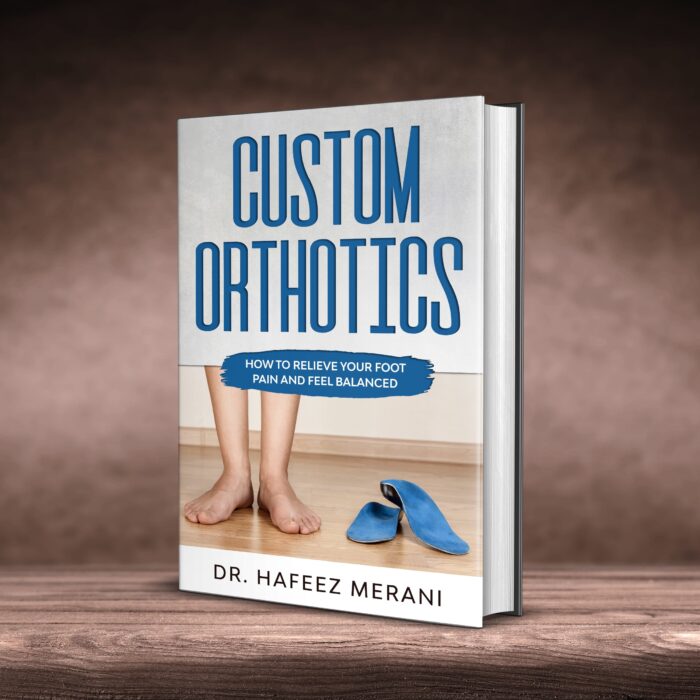
Hi, my name is Dr. Hafeez Merani and welcome to Metrotown Family Chiropractic.
You’re about to discover the secret of how custom orthotics can help you get relief from foot pain and help you feel balanced.
We’ve created this article for you, to help answer these important questions everyday people ask about custom orthotics:
- What do orthotics do?
- How much do custom orthotics cost?
- Do custom orthotics work for plantar fasciitis?
- How to get properly fitted for custom orthotics?
- Do custom orthotics help with Achilles tendonitis?
- What is the proper way to be fitted for custom orthotics?
- How to know if you’re a good candidate for custom orthotics?
- … and much, MUCH more!
We hope you you enjoy this resource we have put together for you and thank you for stopping by.
As a proud member of the Burnaby community, we at Metrotown Family Chiropractic are here to provide personalized care and support for all your foot and back pain needs.
Enjoy!
What are custom orthotics?
Custom orthotics are a biomedical device that are designed to be placed into your shoes, to help align your ankle foot bones into the most bio-mechanically optimal position when you step on them.
An analogy that easily explains how orthotics work involves considering a pair of glasses – a lens is designed with the correct curvature to allow you to see things clearly.
Similarly, the high-density materials that make a custom orthotic act like an interface between your shoe and your foot therein, reducing stress and strain on your legs and hips when you stand, walk, or run.
Since custom orthotics are designed with your feet specifically in mind, they are meant to fit easily into your shoes and provide a seamless transition to having less pain and foot fatigue when you are performing your activities of daily living.
What do custom orthotics do?
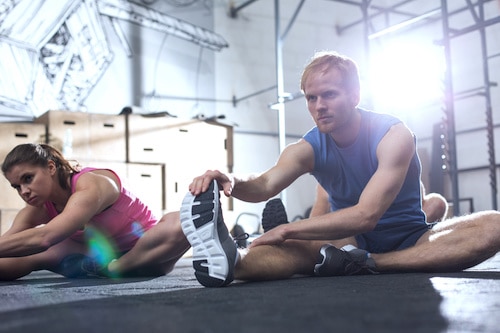
Custom orthotics are specially designed for you via foam, 3D scan, or plaster cast to align the bones in your feet to help eliminate tension in your arch and subsequently in your hips, knees, and low back and relieving pain. They are just one aspect of holistic healthcare. To explore how custom orthotics complement other treatments, such as chiropractic care and massage therapy, read our article on the benefits of integrating chiropractic treatment with massage therapy.
Who needs custom orthotics?

Whether you’re an avid hiker exploring the trails of Burnaby Mountain, a busy professional commuting across Burnaby, or a parent chasing after kids at Deer Lake Park, custom orthotics can provide the support and relief you need for your active lifestyle.
Having foot mechanics that are compromised or suboptimal may lead to you having some of the following conditions:
- Arch Pain
- Foot Pain
- Back or Knee Pain
- Bunions
- Hammertoes
Custom foot orthotics can manage any of these conditions, including foot pain, which can be a significant contributor to back spasms. If you’re looking for effective ways to relieve back spasms, check out our article on how to treat back spasms.
Who would you see for custom orthotics? Where can I get fitted for them?
Your chiropractor is a great person to see and obtain custom orthotics.
Podiatrists, family physicians, and even some physiotherapists may prescribe and dispense orthotics as well.
In Burnaby, residents have convenient access to these services right here at Metrotown Family Chiropractic, located in the heart of Metrotown, making it easy for you to get fitted for custom orthotics without having to go far.
How do I get custom orthotics?
Your chiropractor is an excellent place to get custom foot orthotics as they have a background in biomechanics and are trained to recognize imbalances in your feet and body.
If you’ve never been to a chiropractor before, feel free to call one close to you to inquire if their clinic offers custom orthotics.
If you’re a regular patient, you can prompt your practitioner by mentioning any ongoing complaints or pain in your feet and if it’s possible that your biomechanics are suboptimal and would benefit from correction.
What is the proper way to be fitted for custom orthotics?
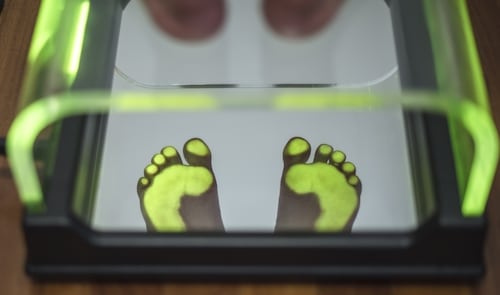
There are multiple ways to obtain your fitting for custom orthotics. Many years ago, orthotic clinics used plaster to take a physical mold of your feet – this was a time consuming and involved significant clean up after it was done.
As technology has evolved, there are two common options currently used.
The first is to use a foam cast to obtain a 3D impression (akin to stepping into sand that retains its shape).
This is then shipped to the orthotics lab to make the device.
The second is to use a 3D scanning device attached to a tablet or Ipad to take a digital impression of both feet when they are in a neutral position.
We opt to use the digital technique at our clinic with a 3D scanner and find it to offer excellent results to our patients.
Please note all three of the above-listed techniques are also combined with a gait analysis and physical examination of your feet, as this is critical to ensuring the correct modifications are applied to your devices.
This ensures the highest likelihood that your custom orthotics will be successful in managing your pain.
How do I know if I’m a candidate for custom orthotics?
If you have generalized foot pain, arch fatigue, hip, knee, or low back pain, custom orthotics may be indicated.
Another factor may be your occupation, mainly if you spend long periods standing or doing tasks in steel toe boots.
Your chiropractor or orthotics specialist will take a look at your feet and perform an exam to confirm eligibility since not all people benefit from orthotics.
Do custom orthotics work for plantar fasciitis?

Absolutely – this is one of the most common reasons custom orthotics are prescribed by health care practitioners like family physicians, chiropractors, or physiotherapists.
The plantar fascia runs from your heel to the base of your toes. Since the custom orthotics add support to the fascia, they tend to help decrease inflammation and symptoms over time.
Especially for Burnaby residents who enjoy the city’s numerous walking paths and parks, addressing plantar fasciitis with custom orthotics can mean the difference between enjoying your walks at Central Park and sitting them out due to pain.
In some instances where custom orthotics aren’t able to eliminate the pain entirely, other treatments may be used in conjunction to help decrease symptoms.
Do custom orthotics help with Achilles tendonitis?

Yes, they can – by altering the mechanics of your foot and artificially shortening the distance that your Achilles tendon needs to travel, orthotics can help lessen the workload on an Achilles tendon allowing the inflammation to dissipate over time.
Other rehabilitation measures such as stretches, ice, and foam rolling may be prescribed in addition to using custom orthotics.
Should I wear my custom orthotics all the time?
Since orthotics are a passive device, by wearing them all the time during your activities, less biomechanical strain will be realized on your feet, knees, and low back.
If you have a specific pair of shoes/footwear that your orthotics don’t fit inside (i.e., skates or soccer cleats), be sure to ask your chiropractor for a second pair that is specifically designed for these shoes.
Should I wear my custom foot orthotics running?

Absolutely! Orthotics are made to be used with activities that were causing your foot, knee, or low back pain.
In other words, they should seamlessly integrate into everything you want to do, like running, soccer, hiking, or even just going for a casual stroll.
Enjoy using them and make sure you follow the instructions for cleaning/maintenance on this blog post.
What are the best shoes to wear with custom orthotics?

As a general rule of thumb, most shoes will be able to work with custom orthotics.
However, it’s important to remember that custom orthotics are designed to help provide additional stability to your foot.
Hence, you want to ensure that the shoes you place them in offer motion control and are wide/deep enough to accommodate the medical device.
Also, please remember to remove the insole that came with the shoe and replace it with the custom orthotic.
Examples of compatible footwear would range from tennis shoes, boots, all the way to dress shoes, or steel toe industrial boots. If you’re curious about what chiropractors do and how they can help, our article on what a chiropractor does provides valuable insights.
Our orthotics supplier also offers a carefully-selected line of footwear that can accommodate custom orthotics, as well as custom sandals and clogs that have your prescribed device built right in.
Be sure to remember to bring the shoes you’d like to use with your new pair of orthotics to your appointment so the chiropractor can ensure the right type of custom orthotic device is selected.
What type of shoes can’t you wear with orthotics?
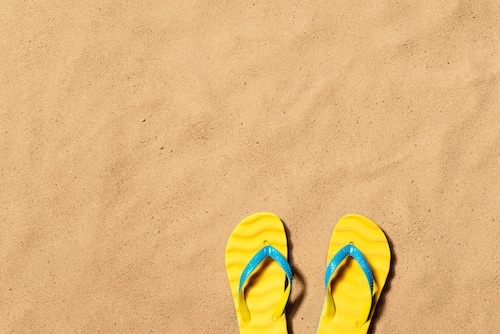
As long as you specify the type of shoe you’d like your custom orthotic to reside within, they can be made for almost any kind of shoe.
The exception would be sandals.
Another critical point is that as shoes get less supportive (i.e., flats, high heels), an orthotic will be less helpful than if it is placed and designed in a more supportive shoe.
Have a conversation with your chiropractor or dispensing practitioner to determine the best course of action to satisfy your objectives and help manage your pain.
How does an orthotic appointment go?

Great question! To begin, you will fill out an information form in the waiting room, providing us with the following pertinent information: your height, weight, and shoe size.
The next step is a consultation with our chiropractor to ensure custom orthotics are appropriate and indicated for your condition.
This will include a physical exam of your feet, gait analysis, and other functional tests.
After verifying that custom foot orthotics are needed, our chiropractor will take a 3D digital scan of both feet that will then be sent to our custom orthotic manufacturing company in Ontario.
The entire process typically takes about 15 minutes.
Still, the chiropractor is always willing to spend the time to answer any additional questions you may have, especially if this is the first time you’re getting custom orthotics.
When will I receive my custom orthotics?

In most cases, we will have your orthotics ready within approximately 5-10 business days.
We will be sure to email or call you when they’re ready to pick up.
It’s also a good idea to bring the pair of shoes you’d like to place your custom orthotics inside when you are picking them up to ensure they are appropriate.
When do I pay for my custom orthotics?

At our clinic, there is a $100 deposit and the balance remaining of $400 is due upon pick up of your custom orthotics.
How much do custom orthotics cost?

The cost of custom orthotics at our clinic is $500.
This includes the initial assessment, gait analysis, and 3D casting, with the follow-up appointment where orthotics are dispensed.
All of this is done by our resident chiropractor, who will guide you through the process.
The price of custom orthotics can vary depending on the clinic and practitioner, so you can expect to spend between $500-800.
We understand the financial considerations of our Burnaby clients and strive to provide clear, upfront costs and assistance with insurance claims to make your health investments as straightforward as possible.
How long do custom orthotics last?
Generally, a pair of custom orthotics can last anywhere between 1-5 years, making them a long-term investment in your health. If you’re concerned about healthcare costs and wondering about the expenses of chiropractic care, our article on how much a chiropractor costs without insurance can provide you with insights.
Taking good care of them, as described in the paragraph below, can help to extend their longevity closer to the five-year mark.
One important note is that the top cover can be replaced if it gets worn out, but the tough plastic nickelplast material should not deform.
If you start to your foot symptoms return, a new orthotic may likely be necessary as your biomechanics change over time.
How do I know when to replace my custom orthotics?
You can replace your custom orthotics when you start to experience foot, knee, or low back pain again or if the material begins to deteriorate.
Sometimes, it’s possible to refurbish the orthotic without totally replacing it (which can offer considerable cost savings), so make sure you bring this up to your chiropractor to see if this is an option.
How do I take care of and clean my custom orthotics?
Taking good care of your orthotic devices will make them last longer. Learn more about caring for your foot health, including effective exercises to relieve foot pain, in our article on 7 effective plantar fasciitis exercises. Here are some tips on how to clean orthotics:
- If your orthotics get wet, ensure you take them out of your shoes at night and let them air dry. Please do not place them under direct heat or put them in the dryer as this will damage the binding materials and cause them to separate quicker
- To clean your custom orthotics, you can scrub them with mild soap and water. Then, as mentioned above, leave them in an open space to air dry
- Avoid putting them in the washing machine, or dishwasher (yes, someone has tried that) to clean the orthotics
- Apply a light dust of talcum powder to the bottom of your shoe before you place your newly washed orthotic inside to absorb any residual moisture that may still be present – this will result in a pleasant scent and help limit the likelihood of bacterial growth
How do I get the smell out of my orthotics?
The smell likely exists due to moisture and bacteria build-up.
Immediately take the custom orthotics out of the shoe, and rinse with mild soap and water.
Let them air dry in a well-ventilated space for 1-2 days until they are completely dry, upon which you can insert them back into your shoes.
For our Burnaby patients, we recommend taking advantage of the drier, sunny days by letting your orthotics air out outdoors, ensuring they’re ready for your next walk along the Burnaby Fraser Foreshore Trail or your daily activities.
For further protection, apply a light dusting of talcum powder on both sides of the orthotic to help keep moisture away.
Why do my custom orthotics feel uncomfortable and hurt my feet?
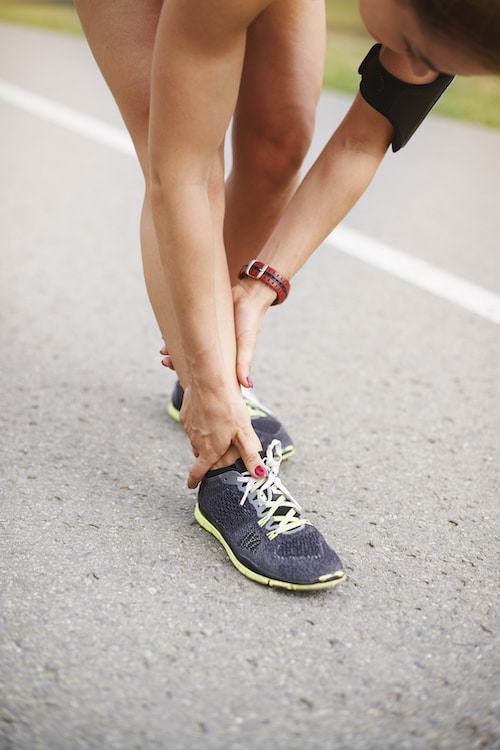
If you ever experience pain after wearing orthotics, you’re not alone.
Getting used to orthotics can be a little uncomfortable when you first start wearing them, but it’s essential for your overall foot health. If you’re experiencing discomfort and looking for ways to relieve it, our article on how to treat back spasms offers valuable tips.
Since the custom orthotic works to realign the structure of your foot, you may feel pressure in some areas as the custom orthotic attempts to do its job, and this is the reason you just might experience some foot pain from orthotics in the beginning.
For this reason, custom orthotics should be worn in two-hour intervals and slowly extend the wear time over two weeks.
In rare instances, after two weeks, your orthotic will still not be comfortable – if this is the case, we can send your orthotic back to our manufacturer for revisions.
What are the best custom orthotics for flat feet?

For optimal foot biomechanics, you need to have an arch on the medial aspect of both of your feet.
In essence, this helps to act as a shock absorber and allows you to carry out activities like running, walking, and standing on your feet for prolonged periods.
Flat feet occur when the medial arch is lower or completely collapsed.
Please note that having flat feet does not definitively mean you will have foot pain, but rather increase its likelihood.
There are many different types of foot orthotics to help with flat feet.
Over the counter, insoles are designed as a general approach to helping most patients.
However, custom foot orthotics are the best way to manage flat feet as they are specifically designed to help restore your arches, keeping your personal biomechanics in mind.
They are designed with a higher quality of materials, and the correct modifications as prescribed by the chiropractor to ensure their likelihood of success.
Also, most clinics offer a return policy if you are unsatisfied with the results of your custom foot orthotics, versus an over-the-counter pair of insoles typically are non-refundable.
How do I choose the right type of custom orthotics?
The best way to choose the correct type of custom orthotic is to inform your chiropractor about the main activity you’ll be using them for.
For example, a custom orthotic designed for your skates would be very different than those made for your running shoes.
Clinics that dispense custom orthotics typically have samples available for you to look through, so feel free to browse this selection to inform your choice.
Usually, extended health insurance companies renew their coverage for orthotics every calendar year.
So you can use this feature to help determine if you’d like an additional pair of orthotics you’ve been dispensed, or switch the type of footwear you’d like to place them inside.
Why do my feet fall asleep when I’m wearing my custom orthotics?
Although having minor aches or pains for the first week or two is normal when transitioning to a new pair of custom foot orthotics, your feet should never fall asleep.
This likely points to an error in manufacturing, or that the biomechanical support was not appropriately applied to the device.
You should speak to your orthotics practitioner immediately to determine the next steps you can take, which may include a modification to the orthotic or a complete redesign.
Please note that happens only in very rare instances.
What if I’m still unhappy with my custom orthotics?

Don’t worry – our goal is always to ensure you are happy with any product or service we provide.
If you are unsatisfied, we will give you a 100% refund in exchange for the orthotics within two months of receiving them.
My custom orthotics don’t fit in my shoe?
The most common reason this occurs is since the shoes already have a prefabricated insole inside of them.
Simply take your hands and gently pull the prefabricated insole out from the edges (sometimes it’s glued) to remove it fully from the shoe.
Then, put the new custom orthotic inside, and it should fit nicely.
If you are still having issues, contact the practitioner who dispensed the custom orthotics to seek further guidance.
When using orthotics, should I always take out the existing insole in the shoes I’m placing them inside?
Yes! It will be uncomfortable to place your orthotics on top of existing insoles.
Please do not discard the original insoles that came with your shoes in case your orthotics require modifications to be made.
How should running shoes fit when you wear orthotics?
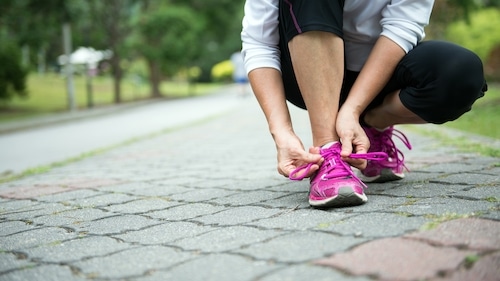
The shoe should fit exactly like it was without the orthotic in place when you purchased them from the store.
There should be ample space for your toes and heel while ensuring that when you walk, the shoe remains on properly and doesn’t cause an abrasion blister.
In terms of what you feel, the main difference is that you have more support/cushioning in your arch and throughout the bottom of your foot.
Most orthotic practitioners encourage patients to bring their shoes in when the devices are dispensed to ensure an appropriate fit.
What’s the difference between orthotics and insoles?
These terms can be used synonymously and are defined as a corrective device put into shoes to help restore the biomechanics of the feet.
Generally speaking, insoles are prefabricated and are obtained without any biomechanical evaluation or custom modifications – they can be found in the supermarket or sporting goods stores.
They tend to be cost-effective and are not covered by extended health insurance plans.
Orthotics tend to be customized for the individual and have a higher quality of materials – as such, they are usually more expensive and therefore covered by extended health insurance plans.
Will my muscles get weaker wearing custom orthotics?
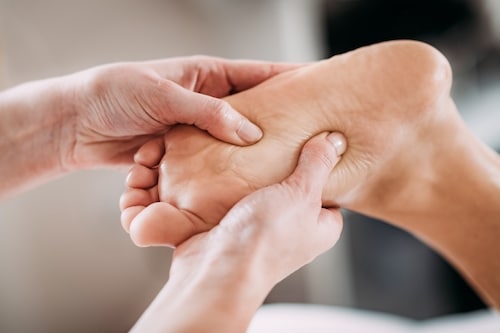
Custom orthotics do not reduce muscle strength – instead, when the bones in lower limbs are optimally aligned, the muscles should fire stronger and fatigue less quickly.
With that said, custom orthotics are a passive device to help your feet work more anatomically efficiently, so to benefit from them; you have to wear them as much as possible.
What happens if I stop wearing my custom foot orthotics?
Many people who come to our office ask us, “Should I wear orthotics all the time?”
Since orthotics are a passive device, you only receive the benefits of the biomechanical control and support they offer when wearing them in your shoes.
In other words, if you don’t wear them, your foot mechanics will return to where they were before you started using the custom orthotics.
Although it is possible to train the intrinsic muscles of your feet to help restore the arch and make it stronger, this is a time-consuming and challenging task that only athletes typically undertake.
If you have any questions about strengthening the intrinsic muscles of your feet and arches, please do not hesitate to ask your chiropractor.
Does my extended health plan cover custom orthotics?
In the vast majority of cases, custom orthotics will be covered by your extended insurance plan.
It’s always a good idea to call your insurance company ahead of time or visit their website to ensure you’ve fulfilled all the reimbursement criteria before seeing our chiropractor.
One of the most common requirements required from most extended insurance companies is a prescription from your family physician/doctor.
Please note you don’t need to provide this to our chiropractor, but rather submit it to your insurance company with our receipts and invoices.
Are you able to direct bill my custom foot orthotics invoice to my insurance provider?

Unfortunately, at this point, extended health insurance companies do not allow medical to direct bill custom foot orthotics in a similar fashion to medical visits.
In the event this changes, we will update this post.
What will the chiropractor provide to help me submit my orthotics claim to my extended health insurance company?

On your second appointment when the chiropractor dispenses your orthotics and ensures they fit correctly, our front desk will provide you with the following:
- Orthotic prescription letter complete with health history, biomechanical findings, gait analysis, diagnosis, casting and manufacturing technique, raw materials used, laboratory location, and podiatrist on file
The above components will likely satisfy all requirements that are necessary to fulfill your claim.
However, in the event your extended health insurance company needs something else, please let your clinic know, and we will do our best to provide it.
Ensuring patient satisfaction is always our top priority.
Are there different types of custom orthotics?
Absolutely! Our manufacturer makes different types of orthotics for various applications.
The most common examples are safety shoes, runners, dress shoes, and even orthotics with extra cushion.
But others include special ones for skating, skiing, and even soccer.
Be sure to ask our chiropractor which one they recommend for the application you are desiring.
Why are custom orthotics so expensive?
When you compare custom orthotics to those that are available in the grocery aisle, there is a significant price difference ($30-60 vs. $400-600).
The reason for this stems from the quality of the material used, the specificity of the device, the doctor’s time in prescribing the right type of orthotic with the modifications you require for the pain you present with, and how long they will last.
Some patients may do very well with an over the counter orthotic so if funds are limited or you don’t have extended health insurance company to help with the expenditure; you may want to try this option.
Some clinics may offer prefabricated orthotics as well in addition to custom orthotics, so be sure to ask your chiropractor for details regarding this other option.
Where can I buy custom orthotics?

Our chiropractor is licensed and trained in prescribing and dispensing custom foot orthotics.
We look forward to helping you resolve your foot, knee, or low back pain soon.
Podiatrists, some physiotherapists, and other practitioners may also dispense custom orthotics – be sure to call the respective clinic to find out if they do.
Who makes the best custom foot orthotics?
This is a subjective question; however, the following tips will help you inform your decision on where to purchase custom orthotics.
The first is to search for a clinic that is well-reviewed and reputable.
The second tip is when you call, ensure the reception staff is willing to answer your questions with regards to the orthotics.
Thirdly, look for a clinic that offers a satisfaction guarantee so that in the event the custom foot orthotics don’t work properly, you’re able to get your money back.
Lastly, most practitioners will offer a complimentary consultation to ensure you’re a candidate for custom orthotics (not everyone is), so inquire about this before booking your appointment.
We are pleased to state that our orthotics clinic honors the above points and looks forward to minimizing your foot, ankle, knee, or low back pain through our custom orthotics.
Ready to take the first step towards relieving your foot pain and improving your overall well-being? Metrotown Family Chiropractic, your trusted Burnaby chiropractor, is here to help. Whether you’re dealing with arch pain, back or knee discomfort, or conditions like plantar fasciitis, our team of experts can provide you with custom orthotics designed just for you. Contact us today to schedule a consultation and discover how our tailored solutions can make a significant difference in your life. Say goodbye to foot pain and hello to a healthier, happier you!
